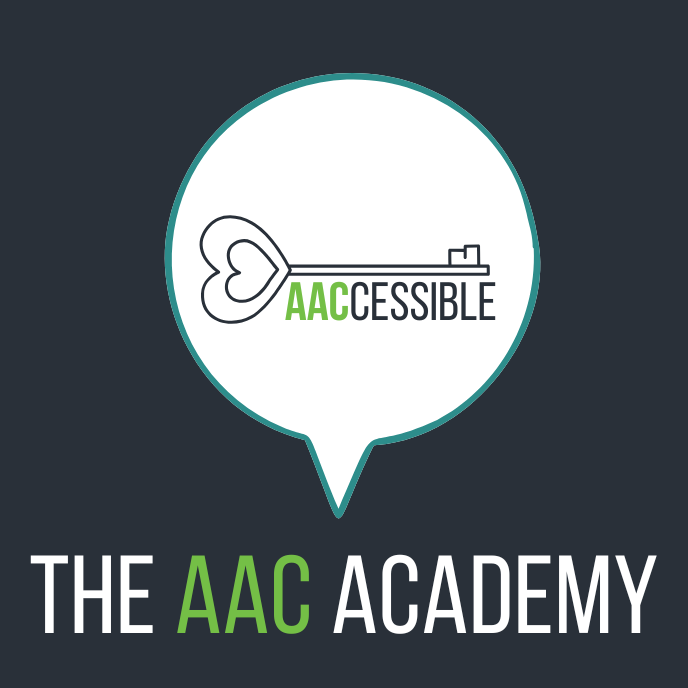Data Tracking for Effective AAC Systems & Services
Data collection is often a looming task in the provision of services to individuals who use assistive technology and for service providers to track the effectiveness of their projects. What do you measure? Why do you collect data? How do you frame the data collection process and question so that what is being collected is essential and makes sense?
During this 5-part webinar series, glean 40 years of experience in assistive technology from Kelly Fonner to learn effective and efficient strategies to collect data in the provision of services to your AAC clients. We will be using the “How do you know it? How do you show it? (P.Reed, G.Bowser, J.Korsten) book as a resource throughout the series. We will explore how data collection is structured in assistive technology, with AAC examples of measurement tools and strategies, and the importance of why you measure data and outcomes. Understand the important ways in which we can collect information in AAC, which helps make informed decisions on product selection and/or strategies for the implementation of products.
Kelly will share real life case studies from individuals on her caseload during AAC assessment and implementation. Build your short and long-term data collection strategies and a variety of methods of compiling information and tracking services and AAC tool provision. Examples will be plentiful throughout the series, including collecting data from video, reviewing collected artifacts, surveying, and creating effective matrices for evaluation. Attend with a particular child/student/situation in mind to build a data collection process for and/or data from a collection process that you’ve already done to share with other attendees. Finally, and most importantly, be prepared to get plenty of ideas on how to add data collection in a practical way to your already busy day.
WHAT'S INCLUDED
-
5 Modules
-
12 months of access
-
CMH, Certificate Provided
-
Multimedia, hands-on learning experience
-
Online classroom community
-
Loads of resources!
Data that works for you
Learn how to ditch the data collection 'box' and find strategies that compliment your educational or intervention approach.
Support meaningful progress
Is your data collection grind holding you (and your students) back? Level-up your strategies to support meaningful and measurable progress.
Learning Objectives
Upon completion of each part of this series, learners will attain the following objectives and use a combination of assessment methods to determine growth across objectives.
Session 1: Framing the Data Question & Creating a Plan
- Determine times that data collection/analysis is needed in order to effectively serve a person using AAC.
- Describe at least 2 differences between quantitative and qualitative d ta collection in AAC.
- List at least 4 ways in which data can be collected in measuring AAC effectiveness.
- Give an example of long-term and short-term data collected in AAC Service provision.
- Give examples of at least 3 types of data collection and their use in AAC.
- Describe the process of interviewing a student using the resource, “Hey Can I try that?”
- Evaluate a data tool for effective and efficient components.
Write your awesome label here.
Continuing Education Credit
This series offers eligible students a total of
7.5 certification maintenance hours (CMH)
7.5 certification maintenance hours (CMH)
Learn more about CMH/PDH (versus CEU's or continuing education units) on your course syllabus and on our CEU Page. All learners are encouraged to confirm that this course meets the requirements of their licensing board before purchasing.
Write your awesome label here.
Meet the instructor
Kelly Fonner
Kelly Fonner, MS is a self-employed consultant and trainer in assistive and educational technology. She has a BS in Special Education from Millersville University and an MS in Educational Technology with an emphasis in Rehabilitation/Special Education Technology from The Johns Hopkins University. Her continuing education and research have been in Adult Education and Special Education Technology at the University of Wisconsin – Milwaukee. She holds an Assistive Technology Applications Certificate of Learning from California State University - Northridge.
Kelly has been a teacher, para-educator, instructional media specialist, assistive technology specialist, and education consultant, and is currently a self-employed consultant in assistive technology and is an online teacher and IEP member of students with complex communication and learning needs. She has worked for a statewide AT project on several federal AT-related grants and has been an instructor in university courses on AT. Kelly is also a family member of individuals with physical challenges and with Asperger's. She is a leadership member of QIAT & the WI AAC Network, & a co-author of two QIAT books.
For over 35 years, Kelly has presented at schools, conferences, & to families across the US, and internationally in Australia, Brazil, Canada, and South Africa. She speaks on a wide range of topics, including assisted writing, augmentative communication, computer access, electronic literacy, study skills, assistive technology assessment, and implementation strategies. Each year, she works with approximately 20 school-based teams supporting students and the implementation of AAC & electronic literacy implementation in the classroom.
Kelly is available to do seminars, webinars, consultations, and workshops. Her website is www.kellyfonner.com.
Patrick Jones - Course author
